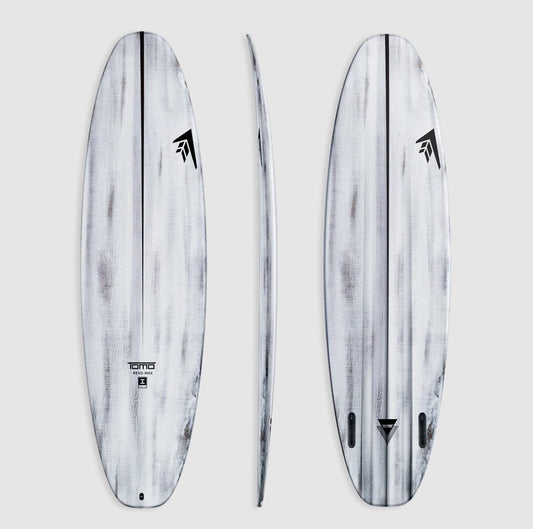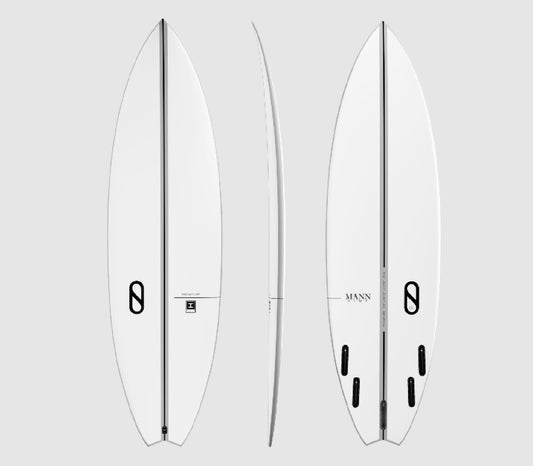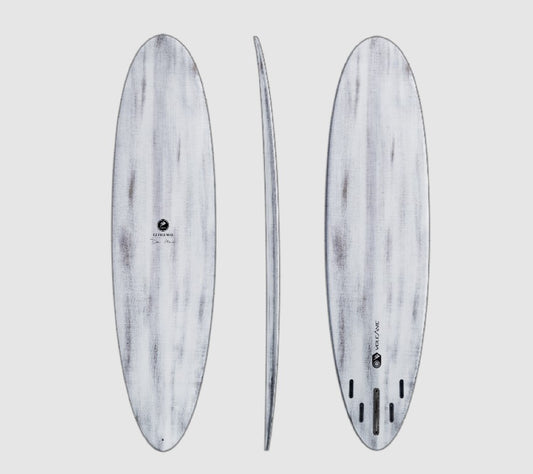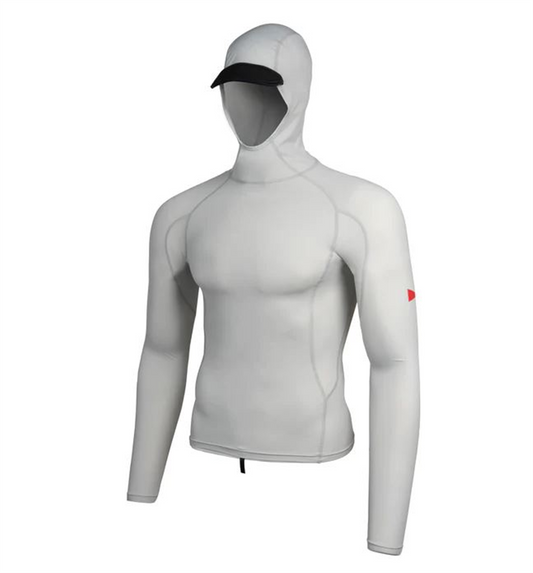The Ultimate Guide to Boogie Board construction
Welcome to Blitz Surf Shop, your destination for all things surf in an online surf shop in New Zealand! If you’re new to bodyboarding or looking to upgrade your gear, understanding bodyboard construction is crucial to getting the most out of your waves. In this guide, we’ll dive into the different types of bodyboard construction—EPS, PE, and PP—and offer tips on how to choose the right size bodyboard for your surfing needs. If you are looking to buy a bodyboard online in NZ, we have a range of boards available throughout the year at Blitz Surf Shop.
Understanding Bodyboard Construction Materials
Bodyboards (Boogie Boards) come in various construction types/materials, each contributing to the board's performance, durability and feel. The core of the bodyboard (boogie board) is crucial as it affects the boards flexibility, weight, durability and performance. Here’s a breakdown of the most common core constructions EPS, PE and PP:
1. EPS (Expanded Polystyrene) Core

EPS bodyboards are known for their lightweight and buoyant qualities. The core is made from expanded polystyrene foam, which provides excellent flotation and makes these boards easy to maneuver in weak waves. EPS is a popular choice for beginners and those who enjoy catching smaller waves. EPS boards are typically less expensive making them an excellent choice for those just getting into the sport. However, they are not generally as durable or high performing as the other core materials which will especially have an impact on better riders or those going out in more powerful surf. They are made stronger and better performaing by the addition of a stringer so keep this in consideration when choosing a board.

Benefits of EPS Bodyboards:
- Lightweight: Easier to handle and less tiring to use.
- Buoyant: Provides good floatation, making it easier to catch waves.
- Affordable: lower cost than other constructions.
- Great for beginners
Cons
- Less durable
- Can lack the performance required for more advanced moves and in hollower waves
Ideal For: Beginners and intermediate riders, especially in smaller surf conditions. Or those on a budget. Check out the Manta Sonic for price point with base leash, Manta Viper for EPS with stringer and coiled leash, Manta Sabre for the larger 45" version of the Viper and the Manta Alien which is a hit with the kids with its handles and tow rope.
2. PE (Polyethylene) Core
PE bodyboards are known for their flexibility and durability. The core is made from polyethylene foam, which provides a softer, more responsive feel which also goes well in colder waters. PE bodyboards tend to absorb impact better, offering a smoother experience in choppy conditions. PE boards are great for intermediate and advanced riders who need a board that can handle a variety of wave conditions and offer a smooth, comfortable ride.

Benefits of PE Bodyboards:
- Flexible: Offers a more responsive ride, adapting well to different wave conditions.
- Comfortable: Softer feel for a smoother experience.
- Durable: Resistant to dings and damage.
- Price: Lower cost than PP
Cons:
- Heavier than EPS and PP boards
- More expensive than EPS
Manta Phantom PE Core Bodyboard On Video
Ideal For: Riders looking for a versatile board that performs well in various conditions.
Check out the Manta Phantom range for a quality, well-priced PE bodyboard form 38-44"
3. PP (Polypropylene) Core
PP bodyboards feature a stiffer core made from polypropylene, which is designed for high-performance riding. They are stiffer and lighter than PE, offering excellent speed and responsiveness. These boards are favored by advanced and professional riders for their speed and agility. The stiffer core allows for sharper turns and greater control, making them ideal for tackling larger and more powerful waves and also performaing more advanced tricks. PP boards also perform exceptionally well in warm water. The best construction if you're regularly going out the backdoor of a barrel

Benefits of PP Bodyboards:
- Stiff and Fast: Provides excellent speed and sharp maneuverability.
- Responsive: Ideal for high-performance surfing.
- Durable: Maintains shape and performance even with rigorous use.
- Light weight: Lighter weight per size than PE
-
Manta Force PP Core Bodyboard Video
Cons:
- Cost: Generally cost a bit more than PE and a lot more than EPS
- Less forgiving for beginners
Ideal For: Advanced riders and those looking to perform tricks and ride big waves.
Check out the Manta Force PP bodyboard for pro level perfrormance, or the Manta Pro XT PP bodyboard in 44" and 46" for pro level performance in a larger, wider template for bigger chargers.
Choosing the Right Size Bodyboard
Want to know how to size a boogieboard? Selecting the right size bodyboard is crucial for performance and riding to your ability. The correct size depends on your height, weight, fitness and skill level. Here are some general tips to help you choose the perfect size for your needs:
1. Rider Weight and Height: Generally, the size of the bodyboard should correspond to the rider’s weight and height. As a rule of thumb, smaller boards (around 37-40 inches) are suited for lighter and shorter riders, while larger boards (around 42-46 inches) are better for heavier and taller riders. A good rule of thumb for the average person is to get the bodyboard that reaches to your belly button, then go up a bit more for heavier riders. For a parent buying for a child you should go a bit longer than this to allow for their rapid growth so your child does not outgrow their bodybard too quickly.
2. Wave Conditions: Consider the typical wave conditions you’ll be ridingand how you want to ride them. This is more for better riders. Smaller boards will be more maneuvrable but larger boards will be more buoyant and stable.
3. Skill Level: Beginners may find shorter boards easier to handle, but less stable and harder to catch waves. A larger board will make the basics easier but smaller board will make progression of moves easier. When in doubt as a beginner go a bit larger. More advanced riders will have their own personal preference for the correct size. Also less fit riders will find they have more trouble getting around on a smaller board.
4. Personal Preference: Ultimately, your comfort and riding style will dictate the best size for you. It’s a good idea to try out a few different sizes if possible before making your final decision.
Conclusion
Choosing the right bodyboard and understanding its construction can significantly enhance your surfing experience. At Blitz Surf Shop, we offer a wide range of bodyboards made from EPS, PE, and PP cores to suit every rider’s needs. Whether you're a beginner looking for a reliable board or an advanced surfer seeking top performance, we’ve got you covered.
Also remember that when you are buying a bodyboard not all boards of the same construction are the same quality. Something to seriously consider when you are looking at price alone....you will find own brand and bulk buying company bodyboards that are great prices but they are not made to the same standards as main brands like Manta, Softech and Ocean and Earth. Buyer beware, you get what you pay for. For example some boards will just have their slicks glued on rather than glued, heated and pressed on. These boards are prone to quick delaminations or snapping. At Blitz we shop around looking at the balance of quality and price as we want our customers to be ahppy with their purchase for a long time.
Also you should always consider wearing fins when bodyboarding. A bodyboard is not as refined as a surfboard and has a much shorter rail line so is harder to paddle. Wearing bodyboard fins gives you a lot more paddle power making you cover greater distances with ease and catch even the fastest moving waves. Consider fin savers for the added insurance of not losing your bodyboard fins in heavy surf. Beginner bodyboarders not wearing fins can easily get in trouble in rips or with strong offshore winds. Stay safe!
Explore our bodyboard collection today and find the perfect bodyboard for your next wave adventure. For more tips and expert advice on bodyboarding, keep an eye on our blog or contact us directly!
Wanting to know what the surf is like in Gisborne today? Check out our free live Wainui Beach Gisborne surf camera
Blitz Surf Shop, more than just a surfboard shop!
Cover photo from surfertoday.com




